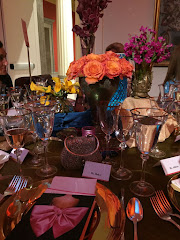 From my book: Forget-Me-Not, Forget-Me-Never, Remember The Fun We Had Together.
From my book: Forget-Me-Not, Forget-Me-Never, Remember The Fun We Had Together.Dear Carrie,
I wish I were a tea-cup,
So when you drink tea,
At every little mouthful,
You will sometimes think of me.
Your Classmate,
Beulah W. Kennedy
June 21, 1906
Lots of y'all with yellowed antique linens out there! As an addition to the milk and soap method listed on our last post (#1, 3-3-2010), y'all may want to try a few alternative methods.
I used to wash my horses with a product called Orvus, found at Southern States. It is what Curators use on all antique textiles.
Also, some experts suggest using Clorox 2, rinsing immediately with warm water as the Clorox will break down the proteins and tannins in the linen, but this is not my favorite method. Twenty-five years ago, I soaked my great-grandmother's tablecloth in Clorox and cold water overnight in the bathtub. It is a French linen and lace tablecloth and it had not been touched in 40 years and was severely discolored brown. It cleaned up beautifully, but now, after many uses and gentile washings, the tablecloth is sprouting small holes and disintegrating a bit, which I regret, but I have used it quite a few times a year for the past 25 years.
Then again, I use my linens lots. I suppose it depends on how often you use your linens and how long you want to keep them or if you have a desire to pass them down to future generations.
Never, never use Woolite. It contains formaldehyde, among many other chemicals and oils. As shocking as it may sound, Woolite is the first product in Fashion School the professors tell you to avoid on ALL fabrics.
When you think about it, linen is nothing but flax. Wild grasses. So be gentile. As always, NEVER try a new method on your favorite, most treasured, great-grandmother's heirloom. PLEASE, test each new method on a small, "NOT your favorite", item.
Be careful, be gentile and enjoy!









